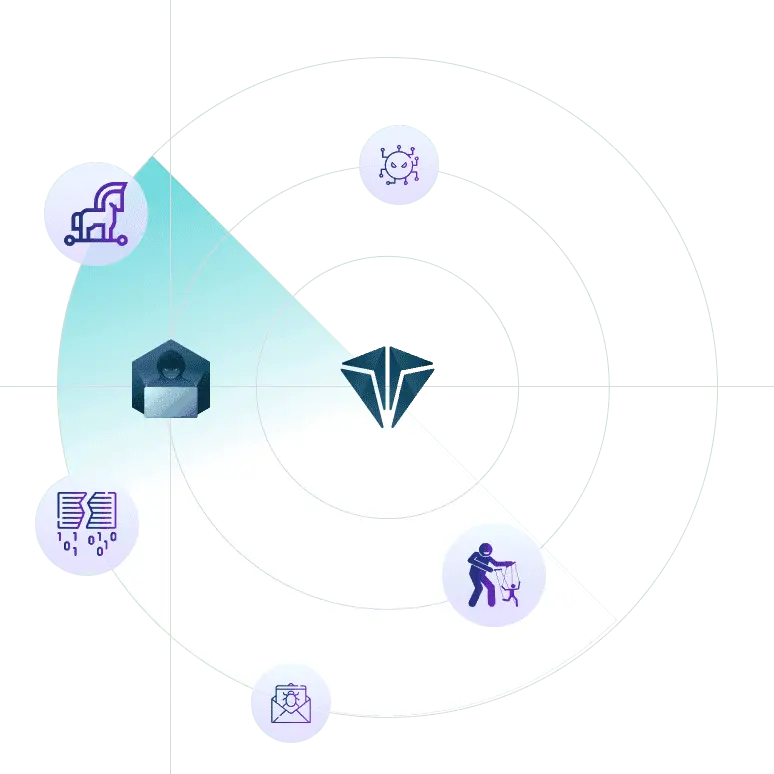In many industries, regulatory requirements mandate conducting penetration tests at defined intervals. These tests are especially critical for sectors handling sensitive data—such as energy, finance, aviation, and healthcare—to ensure legal compliance and maintain robust cybersecurity defenses.
Privia Security, Türkiye'nin En Hızlı Büyüyen Şirketlerinden Biri Seçildi!
En iyi savunma, saldırganın taktiklerini bilmektir!
Bizi farklı kılan hizmetlerimizi keşfedin.
Offensive Security Services
Penetration Test (Pentest) Services Red Team Services Network Security Services Professional Offensive Services (OaaS)
Tüm Offensive security services
Siber Güvenlikte Güçlü Çözümler
Tehditlere Karşı Hazırlıklı Olun
Threat Detection and Prevention Solutions
Intrusion Detection and Prevention Solutions Vulnerability Management SolutionsSecurity Event Management Solutions
Security Information and Event Management (SIEM) Solutions Security Orchestration, Automation, and Response (SOAR) SolutionsData Security Solutions
Data Loss Prevention (DLP) SolutionsIdentity and Access Management (IAM) Solutions
Multi-Factor Authentication (2FA) SolutionsEndpoint Security Solutions
Endpoint SecurityPrivia Security
Siber Güvenlik Ürünlerimizi Keşfedin
Siber Güvenlikte Uzmanlık Kazanın
Siber güvenlik eğitimlerimizi şimdi keşfedin.
Penetration Testing and Security Training Services
Penetration Testing (Pentest) Training White Hat Hacker Training DDoS Attacks and Mitigation Techniques Training Wireless Network Security and Penetration Testing TrainingApplication and System Security Training
Web Application Security Training Advanced MSSQL Security Training IIS Security and Secure Hardening Training Linux 101 LPI Training Kali Linux 101 TrainingSecurity Management and Monitoring Training
Centralized Security Monitoring and Incident Management Training Intrusion Detection and Log Management TrainingSocial Engineering and Security Awareness Training
Social Engineering Awareness Training Information Security Awareness Training Executive Security Awareness TrainingCryptology and Cyber Attack Techniques Training
Modern Cryptology TrainingE-Kitap:
DDOS Saldırıları, Türleri ve Korunma Yöntemleri
Webinars
Siber güvenlik alanındaki en son gelişmeleri ve stratejileri öğrenmek için düzenlediğimiz interaktif seminerlerimize katılın.
Reports & E-Books
Privia Security uzmanlarımı tarafından hazırlanan detaylı raporlar ve kapsamlı e-kitaplarla siber güvenlik dünyasına derinlemesine bir bakış atın.
Blog
Siber güvenlik trendleri, ipuçları ve analizlerle dolu blog yazılarımızı keşfedin.
Deloitte Başarı Ödülü
Privia Security Türkiye’nin İlk 50’sinde!
About Us
Privia Security olarak işletmenizin siber güvenlik ihtiyaçlarını en üst düzeyde karşılamak için çalışıyoruz. Bizi yakından tanıyın.
Careers
Siber güvenlikte kariyerinize yön verin. Privia Security’de, geleceğin teknolojilerini şekillendiren bir ekibin parçası olun.
Latest News
Siber güvenlik dünyasındaki en son gelişmeler ve Privia Security’nin başarı hikayelerini buradan takip edin.
Contact
Siber güvenlik çözümlerimizle işinizi koruma altına almak için bizimle iletişime geçin.





